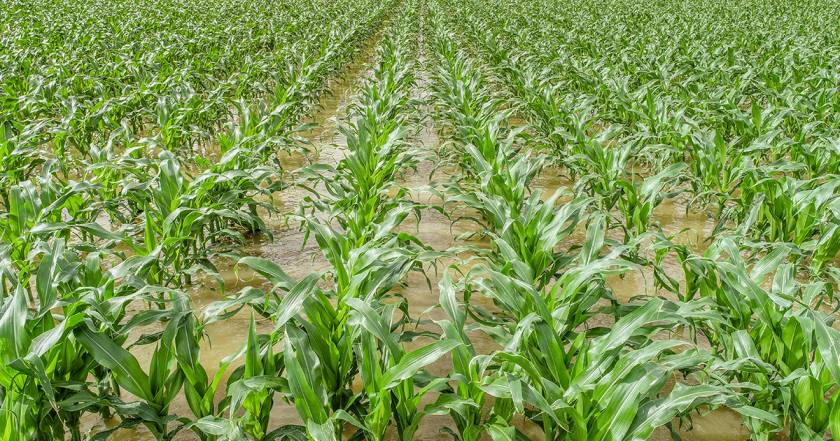Surviving Abnormal Wet Conditions

This spring has been difficult with the constant wet conditions, the past few weeks has worried many farmers. Many of our field crops planted, may face major effects from excessive rain and flooding.
The survival of the flooded corn and soybean seedlings depend on factors, such as how long the flood waters stay around, water temperatures, and how fast the fields dry out.
Crops in flood waters deplete oxygen in 24 to 48 hours. Moving water helps to allow oxygen to the plants and will likely result in less damage for the crop. Younger plants can survive about two days, when temperatures exceed 70 degrees. Abnormally high temperatures reduce survivability by 50% or more.
Overall, soybeans can tolerate flooding about 48 hours longer than corn. The longer the water is surrounding the plant the more it damages the root, limiting the plants ability to take up water and be able to tolerate stress. As a result, farmers can expect stand reduction, loss of strength and triggering lower yield.
Cool, wet fields create favorable conditions for soil pathogens. They also delay plant development and growth. This puts some plants at greater risk of soil-borne diseases that attack seeds and seedlings. Additional seed treatments can help prevent and eliminate diseases when applied, as soon as possible. In the hope of floodwater receding quickly, plants should show new leaf development within three to five days.
It is important to be on the lookout by scouting fields and examining seedlings for new diseases.